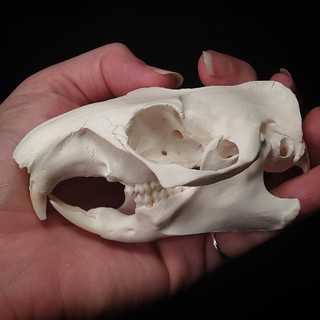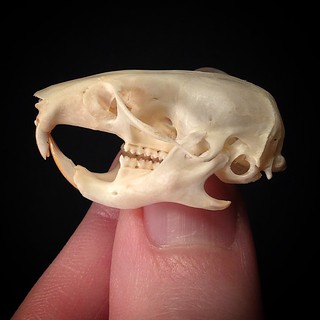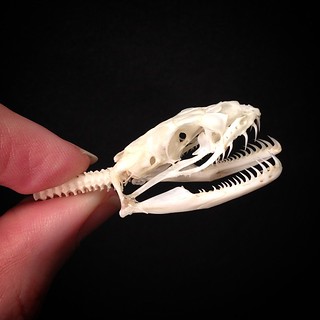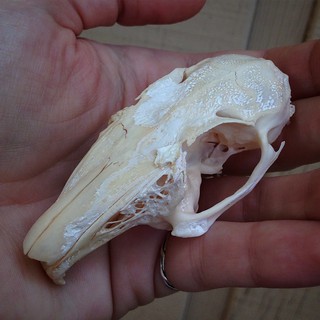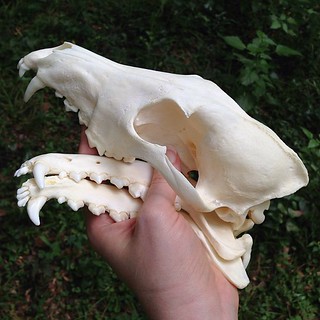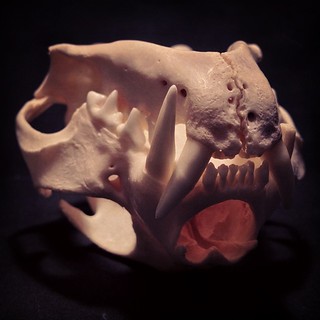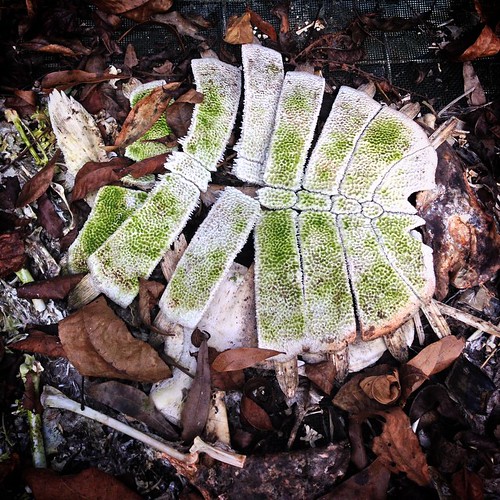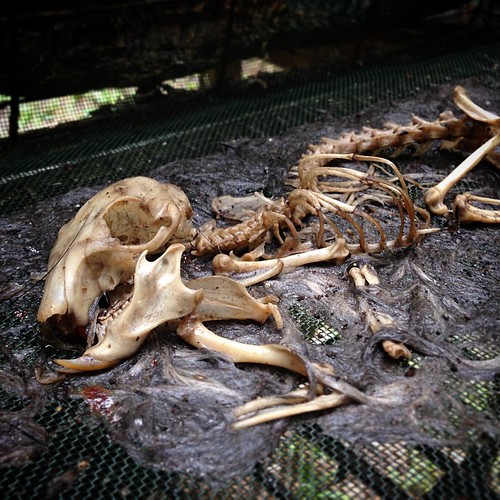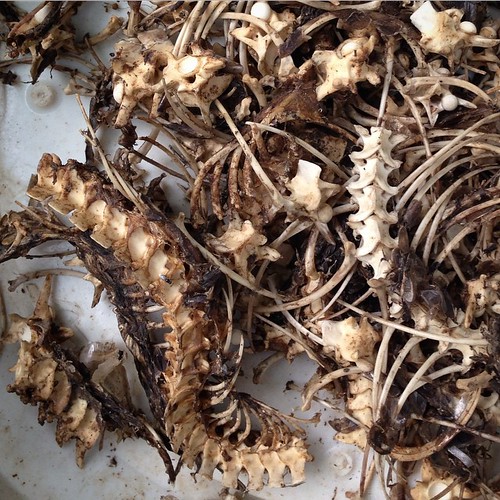
Apologies in advance! I get countless messages in many online locations daily about bone processing, bone ID, etc. Please try to find your answers in these links before messaging me. If you still have questions you are welcome to ask but I may not reply for a while.
Sorry guys, I'm a full time self employed bone artist and simply do not have the time to always get back to your questions in a timely fashion. Especially when it is a time where I have to really focus on something like holiday sales. Which start for me in October. Or an art show or convention that could be any time of the year.
Please take note of the SEARCH THIS BLOG field to the right here where you can quickly search for answers in my many posts rather than having to look for it one at a time.
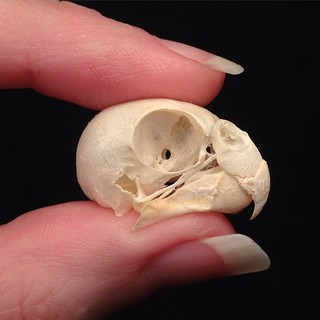
FOR EVERYONE WITH QUESTIONS ABOUT PROCESSING BIRDS:
I really hardly ever post anything anywhere in general about birds because of legal issues. Most birds you're going to come across in US/Canada are illegal to have any part of dead or alive because they are Migratory Bird Treaty Act protected species. If you were to macerate most birds you're likely going to end up with nothing but a stinky pile of mush. To process birds, rodents & small reptiles/amphibians you can't really macerate like larger medium sized animals. You literally have to carefully remove the feathers, skin & muscle with surgical tools, tweezers & scissors as best you can. I rarely do this myself because it is so tedious. If it is mummified it may be even harder to accomplish. Or you can soak a while in water & if you're lucky you can carefully peel away the skin from the bones & just hope that most of the muscle was already eaten away by carrion insects. I'll have to make a longer blog post about this sometime for sure. But for now there's this one:
A LITTLE MORE ABOUT BIRD REMAINS:
Most of the birds protected by the MBTA are not endangered. They are very common and abundant. But that was not the case when the MBTA was created back in 1918. Many common birds were being wiped out into extinction from people hunting them and collecting them & their eggs/nests for their collections. And people using the feathers in fashion. That's the misconception that most people don't understand now. The species that are alive now were saved from extinction by the MBTA. That's why they are so common and abundant now.
It is illegal in US, Canada, Mexico, Russia and Japan to even possess bird remains of species listed on the MBTA. We can not have or sell birds, feathers, bones, eggs, or even nests from anything on that protected list. Likewise, you could be fined up to $15,000 and/or do jail time for having/selling them. So be careful!
Your legal common bird options are - European Starling (Sturnus vulgaris), Feral Pigeon (Columba livia domestica), House Sparrow (Passer domesticus), chickens and other domesticated birds and birds like quail, grouse and pheasants. But some of those game birds you still need permits to hunt and can not be sold.
I want to point out as well that there are MANY pigeon/dove species that ARE protected species and many people have a misconception that they are not. Only Feral Pigeons are OK to have. Also, people often mention that crows are hunted and OK to have. Not that simple. You must have a permit to hunt where they are permitted to hunt and do so in season. Also, hunted crows can not be sold, they can only be gifted. Info about Regulations For Crows.
Final List of Bird Species to Which the Migratory Bird Treaty Act Does Not Apply - Note though that it is somewhat out of date - file orig dated 2005, PDF from 2008. Could be changes since then.
Tons More Animal Parts Laws Can Be Found Here. Here in the US you can quickly look up info on your exact state at the link above which is especially helpful with some laws being so varied from state to state.
Tons More Animal Parts Laws Can Be Found Here. Here in the US you can quickly look up info on your exact state at the link above which is especially helpful with some laws being so varied from state to state.
Here is a list of my most frequented blog posts and topics related to the questions I get for quicker reference to find your answers.
TIPS FOR BEGINNER BONE COLLECTORS:
BONELUST BONE PROCESSING Q&A: I want to start collecting bones/animal remains but I'm concerned about disease.
Most Important Thing For a Bone Collector? Patience.
Starting Over, Learning Anew
Bone Collectors Are Not Sociopaths
BONELUST Q&A: "Can't you get leprosy from armadillos?
DEFLESHING WITH NATURAL DECOMP IN A BONE CAGE:
BONELUST Q&A: "Can I just leave animals to decompose in a bone cage & do nothing else?"
BONE CLEANING WITH MACERATION:
BONELUST BONE PROCESSING Q&A: What should the remains look like to begin maceration?
The Mathematics Of Maceration - A HowTo Guide For The Patient
BONELUST Q&A: "I've been macerating bones & they are now a strange color! Are they ruined?"
BONELUST Q&A: "What's this white stuff on my bones? How do I get rid of it?"
WHITENING AND SANITIZING BONE:
Whitening Bone Using Hydrogen Peroxide NOT Chlorine Bleach
Bad Words: BOIL & BLEACH
WHAT'S WRONG WITH USING CHLORINE BLEACH ON BONE?
Bad Words: BOIL & BLEACH
WHAT'S WRONG WITH BOILING BONE?
BONELUST Q&A: "Why is it bad to boil bones? It is the way I was taught to clean them a long time ago."
Bad Words: BOIL & BLEACH
TROUBLE SHOOTING PROCESSING ISSUES - RED OR BLACK BONE, GRAVE WAX, MOLD, ALGAE, & MOSS GROWTH ON BONE:
BONELUST Q&A: "What's this white stuff on my bones? How do I get rid of it?"
BONELUST Q&A: "I've been macerating bones & they are now a strange color! Are they ruined?"
Whitening Bone Using Hydrogen Peroxide NOT Chlorine Bleach
DEGREASING BONE:
BONELUST Q&A: "How will I know if a skull needs degreasing, I'm not sure what it even looks like?"
HOW DO I PUT MANDIBLES TOGETHER & TEETH BACK IN:
BONELUST Q&A: "The teeth fell out of my skull! Did I do something wrong? How do I fix it?"
BONELUST Q&A: "How do I put mandibles back together & teeth in?"
USING INSECTS FOR BONE PROCESSING:
"Stick it on an ant pile!"
BONELUST Q&A: "Do you use dermestid beetles?"
WHO AM I? WHAT'S ETHICAL BONE ARTIST MEAN TO ME?:
Meet Jana Miller: Founder & Artist of Bone Lust
BONELUST Q&A: What do you mean when you say you’re an ethical bone artist?
BONELUST BONE ART SHOP Q&A: Who is your animal bone supplier?
Jana Miller Bone Lust Interview on Postal Treats
Bone Collecting from the Beginning
